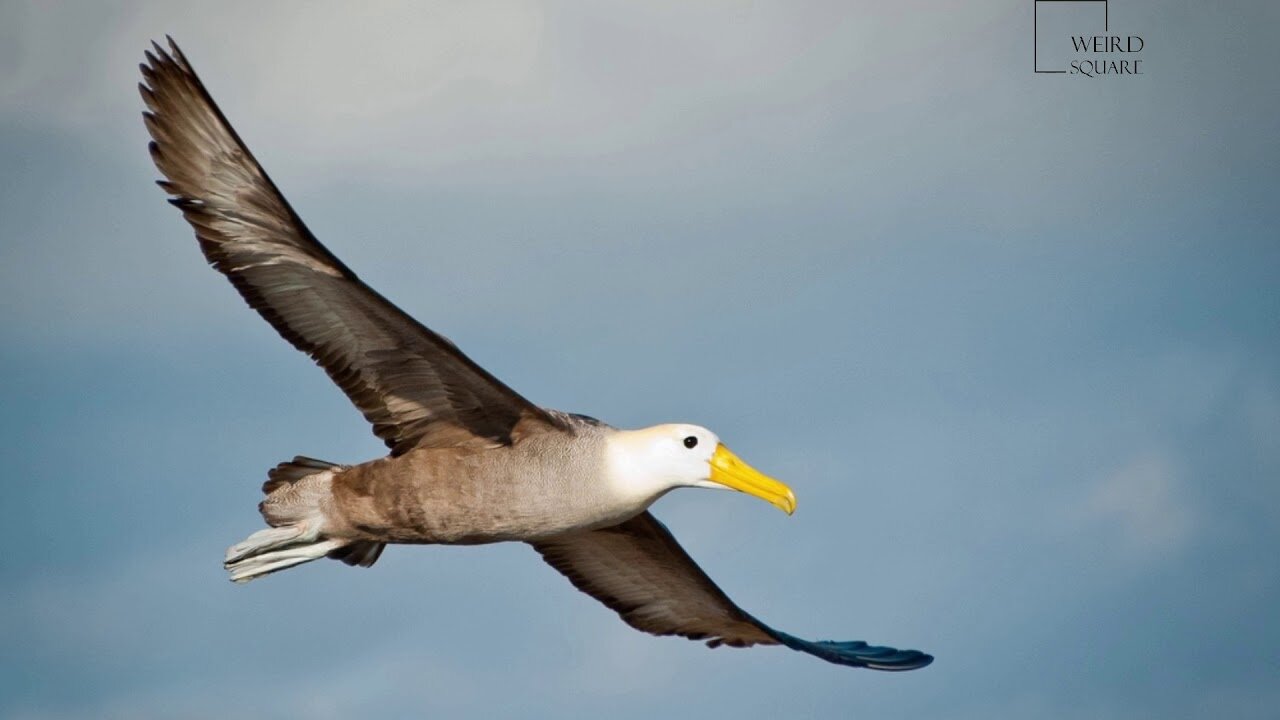Premium Only Content

Explore Interesting Facts About Albatross
The waved Albatross bird (Phoebastria irrorata), otherwise called Galapagos Albatross bird, is the solitary individual from the family Diomedeidae situated in the jungles. At the point when they scavenge, they follow a straight way to a solitary site off the shoreline of Peru, around 1,000 km (620 mi) toward the east. During the non-reproducing season, these birds live principally on the Ecuadorian and Peruvian coasts
Waved Albatross birds are a sort of Albatross bird that have a place with Diomedeidae family and come from the Procellariiformes request, alongside shearwaters, fulmars, harbingers of trouble, and plunging petrels. They share certain recognizing highlights. To begin with, they have nasal sections that connect to the upper bill called naricorns, albeit the nostrils of the Albatross bird are on the sides of the bill. The bills of Procellariiformes are likewise one of a kind in that they are parted into somewhere in the range of seven and nine horny plates. At last, they produce a stomach oil comprised of wax esters and fatty substances that is put away in the proventriculus. This is utilized against hunters and as an energy rich food hotspot for chicks and for the grown-ups during their long flights. They likewise have a salt organ that is arranged over the nasal section and desalinates their bodies, because of the great measure of sea water that they guzzle. It discharges a high saline arrangement from their nose.
These are medium-sized Albatross birds, estimating 80 to 90 cm (31 to 35 in) long with a wingspan of 220–250 cm (7.2–8.2 ft). They range somewhere in the range of 2.7 and 4.0 kg (6.0 and 8.8 lb) in mass, with guys averaging fundamentally heavier than females. They are particular for their yellowish-cream neck and head, which stands out from their generally caramel bodies. Much more unmistakable is the extremely long, radiant yellow bill, which glances lopsidedly huge in contrast with the generally little head and long, slim neck. They likewise have chestnut earthy colored upper parts and underparts, aside from the bosom, with fine notwithstanding, a little coarser on the back end. They have earthy colored upper-wings, back, and tail, alongside a whitish bosom and underwings. Their axillaries are earthy colored. At long last they have blue feet. Adolescents are like grown-ups aside from more white on their head.[9] Chicks have earthy colored cushioned plumes. The life expectancy of this species may arrive at 40 to 45 years.
The essential food wellsprings of the waved Albatross bird are fish, squid, and shellfish, just as more modest birds. Be that as it may, they have likewise been seen to search for other food sources, including the spewed food of different birds. When scrounging, the waved Albatross bird discovers places in the sea where prey will be close to this surface; this is the best route for the Albatross bird to get its food. The waved Albatross birds will search 10 to 100 km (6.2–62.1 mi) away from where the chicks are settling to get nourishment for them. Creature planet
Video made by Animal Fact Files
-
 0:38
0:38
Animal Time
4 years ago $0.02 earnedInteresting Facts About Woodpecker
112 -
 LIVE
LIVE
The HotSeat
1 hour agoTrump Keeps Winning — They Keep Whining While America Rises
775 watching -
 LIVE
LIVE
StoneMountain64
3 hours agoCasuals > Ranked ... I said it
345 watching -
 3:13:18
3:13:18
Barry Cunningham
4 hours agoPRESIDENT TRUMP IS ANGRY TODAY! CEASEFIRE IS BACK ON AND OTHER NEWS!
20.9K19 -
 1:39:42
1:39:42
Winston Marshall
2 hours agoHistorian Reveals Why Peace Has Been Impossible: Israel & Iran w/ Dr Benny Morris
21K7 -
 10:08
10:08
China Uncensored
1 hour agoThe REAL Reason Trump Bombed Iran
1265 -
![[Ep 695] Cuomo vs. a Muslim Communist | War Powers & the Constitution | Sam Anthony [your]NEWS](https://1a-1791.com/video/fww1/2c/s8/1/P/Z/s/W/PZsWy.0kob.1-small-Ep-695-Cuomo-vs.-a-Muslim-C.jpg) LIVE
LIVE
The Nunn Report - w/ Dan Nunn
1 hour ago[Ep 695] Cuomo vs. a Muslim Communist | War Powers & the Constitution | Sam Anthony [your]NEWS
157 watching -
 1:05:58
1:05:58
I_Came_With_Fire_Podcast
16 hours agoUSMC Colonel: Trump Should Keep Ukrainian Refugees
5.3K3 -
 DVR
DVR
SportsPicks
2 hours agoCrick's Corner: Episode 37
4.43K -
 1:13:29
1:13:29
Russell Brand
4 hours ago“They Don’t Know What The F*CK They're Doing!" Trump SLAMS Israel&Iran for Breaking Ceasefire -SF602
185K135